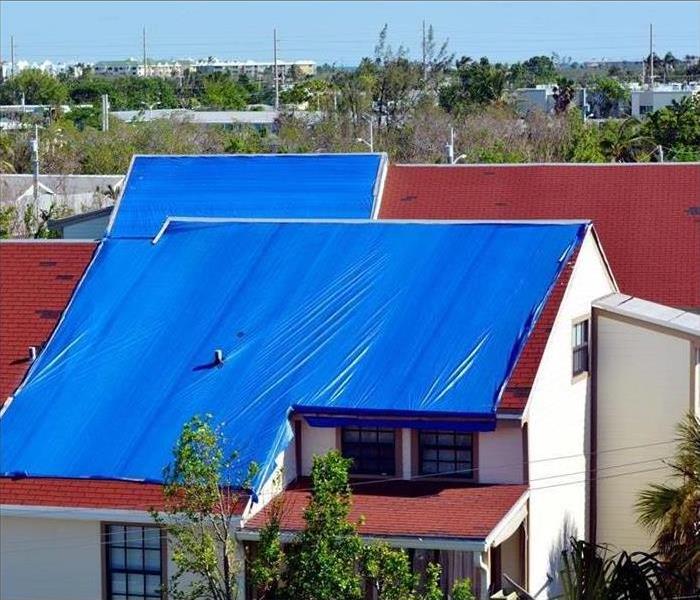What Is Involved With Roof Damage Mitigation?
6/14/2022 (Permalink)
After a severe storm in Summerhill, PA, there is a good chance your home has sustained roof damage. When that rain and wind damage has created areas of exposure on your roof, it leaves an opening for additional damage to happen, such as mold growth. If that happens, there is a good chance that those needed repairs won’t be covered by your insurance provider.
What Does Roof Mitigation Look Like?
After filing a claim, your insurance company will likely require you to take temporary measures to mitigate damage. These mitigation repairs may include:
- Covering cracked or broken skylights and windows with plastic.
- Tarping over the area of the roof that is leaking.
- Placing a tarp over any siding that is loose or missing.
- Removing a downed branch and tarping over the damaged area.
The sooner these temporary repairs are done, the chances improve that additional damage will be avoided. If it is not possible to make these repairs yourself, certified water and mold damage companies often include tarp services.
Roof Damage Prevention
While maximizing your claim may be the most obvious reason to take mitigation measures, protecting your home is the ultimate benefit. From more bad weather to critters, any exposed areas open the door to additional damage. When that happens, it means paying out of pocket for repairs. Although you may not be able to avoid bad weather, there are ways to minimize damage to your roof. These include:
- Check the attic for signs of leaks
- Keep gutters clean
- Remove any debris on the roof
- Replace of patch missing shingles
- Trim trees nearby the home
- Get a roof inspection
When there is roof damage, it opens the door for secondary damage to happen. To avoid that and maximize your claim, take fast action to mitigate the risk and maximize your claim.





 24/7 Emergency Service
24/7 Emergency Service
